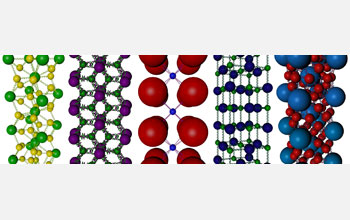Washington, DC, USA
October 13, 2011
Source
Design rules will enable scientists to build desired nanomaterials for broad application of nanotechnology to address social challenges, bolstering industry and creating jobs
Learning the rules for consistently arranging nanoparticles, like nature arranges atoms into molecules and materials, has been a goal of scientists for quite some time because doing so is essential to capitalize on nanotechnology's potential for broad application. This challenge has now been met for a class of materials.
The discovery is detailed in the Oct. 14, 2011 issue of the journal Science and in news released by Northwestern University today. The National Science Foundation (NSF) funds the research.
 Specifically, lead author Chad Mirkin of Northwestern University and his team developed rules that enable scientists to make any structure for almost any application.
Specifically, lead author Chad Mirkin of Northwestern University and his team developed rules that enable scientists to make any structure for almost any application.
"This discovery is the largely the result of high-risk, high reward funding of basic research, in NSF's Nanoscale Science and Engineering Centers" said Mihail C. Roco, senior advisor for nanotechnology at NSF, key architect of the National Nanotechnology Initiative and founding chair of the U.S. National Science and Technology Council's Subcommittee on Nanoscale Science, Engineering and Technology.
Roco continued, "In our 2003 National Nanotechnology Initiative report, we identified the efficient creation of nanomaterials with prescribed properties and functions as key to broad applicability of nanotechnology. With this discovery, Mirkin and his team have met that challenge for a large set of materials. The future is indeed bright for revolutionary new materials and systems and what they will bring to our daily life and to our economic livelihood--from innovative disease treatments, new information methods and more efficient energy conversion storage and use to the companies and jobs created in the process."
Watch and listen to Chad Mirkin as he discusses his discovery and its broad implications for the future of science.
Chad Mirkin is the George B. Rathmann Professor of Chemistry in the Weinberg College of Arts and Sciences and professor of medicine, chemical and biological engineering, biomedical engineering and materials science and engineering at Northwestern University and director of its International Institute for Nanotechnology. He also sits on the President's Council of Advisors on Science and Technology.
Photo credit: Northwestern University